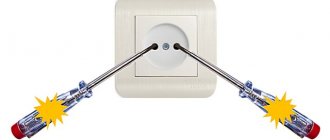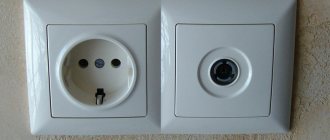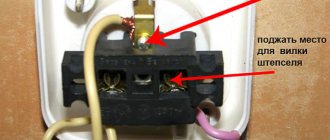My grandparents taught me order since childhood. Since then, I carefully check everything before leaving the house, including electrical appliances: I always unplug the left chargers from the socket and even turn off the kettle. Suspiciousness? Maybe. The other day I left the house and repeated the usual ritual again, but I wondered, is there any point in this? My mother constantly leaves chargers in sockets and even a phone that is already charged - nothing bad happened. I thoroughly understood this issue and realized that not everything is so simple. Do you do the same thing automatically? Then here's a little breakdown for you: Is it possible to leave the charger in the socket?.
Let's figure out whether it is necessary to remove the charger from the outlet or not
How does a phone charger work?
My grandfather always said that a charger sticking out of a socket consumes electricity . Of course, I didn’t believe it, but time has put everything in its place: there really is a consumption, just like with any electrical devices. The switching power supply has a voltage regulator in which several components operate regardless of the load. This is called “quiescent current” - the minimum power load. In power supplies these figures vary from 1 to 20% of maximum power.
Many accessories do not waste energy at all when they are plugged in.
Much depends on the adapter itself, on its quality and design. That is why we always select for you only the most proven options. Some adapters limit power consumption - no more than 1 W in idle mode. Others go into physical shutdown mode even when the smartphone is charged.
Colleagues write: Is it safe to charge your phone in the car?
Does the charging module consume energy when running “idle”?
Electricity does indeed disappear, but in very small quantities - 50 mW/h, that is, 3 kW/h per year. There is no point in worrying about your wallet: you will only pay a few pennies a month for this energy. And if the charger were constantly turned on and off from the outlet, this would affect its service life.
By the way, energy in standby mode is consumed not only by the charger, but also by all other devices. For comparison with the “charger”:
- The microwave oven will use 3 Wh.
- LCD TV - 13 W/h.
- The laptop charger is 15 Wh.
How much electricity does charging your phone use?
Electricity consumption is absolutely negligible
A charger left in the socket consumes idle from 0.06 mA*h to 0.33 mA*h, which in itself is negligible. Even in the “worst” case, such an adapter will consume a ridiculous amount of electricity in a year (about 0.3 kW), which will not affect your budget in any way. Moreover, this has nothing to do with saving. You can keep several adapters in the outlet at once and also will not notice a difference in the increase in your electricity bill.
Reading books, watching movies and 4 more things you shouldn't do on your smartphone
Electricity consumption
The charger does consume electricity constantly, even without the phone. But don't try to reduce your energy bills by turning off charging. In passive mode, the device consumes a tiny amount of energy; in a month it will reel in a few kopecks. If you do not unplug the charger from the outlet for a whole year, the consumption will be 1/3 of a kilowatt. With such savings, the family budget cannot be improved. But if you fundamentally do not want to pay for overruns, even such an insignificant one, remove the charger from the outlet. This is not a question of money, but of desire.
Can a phone charger catch fire?
I turn off the charger because I'm afraid of a fire. This makes sense when the outlet is faulty. In addition, there is a chance that a sudden voltage surge will occur. Yes, modern high-quality chargers have their own resource, which averages 50,000 hours, which corresponds to 6 years of continuous operation. And if you unplug the charger from the outlet , its resource will only increase. Does this make sense? Definitely yes.
The charger can still fail and even catch fire.
Despite the fact that many users change chargers almost every six months due to the fact that they fray and become loose, there are responsible guys who treat accessories carefully. In general, there is still a practical sense in whether or not you need to remove the charger from the outlet
Subscribe to our Yandex.Zen so as not to miss important news from the world of smartphones!
Fire hazard
There are outlets with USB ports. In appearance, this is an ordinary socket with the usual round connectors, below which there are rectangular ports - the same as on chargers. And the “filling” of the socket is the same as that of the charger. Not only wires, but also circuits are hidden under the cover. This means that this is the same power supply, only stationary - mounted directly into the wall. And it is connected to the network - constantly. Nothing lights up. So you don’t have to worry about a fire - the power supply won’t catch fire and set the house on fire.
But be careful if there are common risk factors in your home:
- old or faulty wiring;
- lack of automatic protection against short circuits and overloads.
In this case, anything can happen. But the problem is not charging - a short circuit can occur anywhere in the circuit. To reduce the risk, do not leave plugged-in equipment unattended—even your TV or refrigerator. Better yet, replace the wiring and install a reliable machine and don’t worry about anything.
Another good reason to turn off the charger is a thunderstorm. But again, the problem is not with the power supply. All equipment must be turned off from the sockets; these are standard fire safety rules.
And of course, you should not leave a faulty power supply in the outlet. You don’t need to use it at all - you could lose your phone.
Instructions for the charger
The Ministry of Emergency Situations nevertheless warns that electrical appliances must be disconnected from the network . Although fires due to faulty chargers do not happen so often, you should strictly follow the instructions: manufacturers clearly indicate that for safety reasons it should be disconnected from the network. Yes, original chargers are another item that many people neglect.
Cheap adapters and cables are often made from low-quality materials, and manufacturers of such accessories skimp on their creation. This is what can cause a fire: for example, during a thunderstorm, a lightning strike can damage any electrical appliance, including the charger.
Read on topic: 8 habits that are killing your smartphone
How to handle chargers if there are children in the house?
If there are young children in the house, then the device must be unplugged from the outlet and hidden away from them. You can install a plug on a fixed socket. Even in passive mode, the charger is dangerous for children. Their curiosity leads to the fact that they begin to insert various objects (nails, hairpins, spoons, knitting needles, scissors) into the narrow ports. They may bite through or break the connecting cord, because this product is not designed for gaming.
Important! The current at the charger output is approximately 2 A , voltage - 5 V. For the fragile body of children, the injury received from an electric shock will be painful. Therefore, you need to make it a rule: to safely hide this device away from the eyes of children.
Pets (dogs, cats, parrots) are also not averse to chewing on wires from time to time. If it is a cord from the charger, then there will be no short circuit, but the charger itself will fail.
Photo: https://tele-market.ru/sites/default/files/inline/images/pover-phone_0.jpg
If you look at this issue from the other side, namely, learn to put the charger in a safe place immediately after charging your smartphone, you can avoid many troubles. It will take a few seconds, but you will be confident that you have done everything to be safe.
Why you shouldn't leave your charger in the socket
While charging in a socket without your phone isn't particularly dangerous, there are simple reasons why it should be removed.
Despite the fact that in general, charging in a socket is not dangerous, it is still worth removing it
- You could trip over it and accidentally damage it, not to mention you could pull out the socket (and it happens);
- There is a risk that pets will chew it - due to such negligence, many accessories of our Telegram chat readers have already been damaged;
- Everything should have its place in the house. You don't store glasses or a laptop on the floor, do you? The charger is the same device as any other.
Top features of Yandex.Stations that you might not know about
Safety
Modern chargers are not just a miniature transformer that reduces the voltage from 220V to 5V.
They have long been smart devices that initially have built-in protection against voltage surges.
Pay attention to the housing of your power supply. You will be surprised, but it is capable of operating in very wide ranges from the 220V standard.
In high-quality blocks, the circuit is protected against overheating and short circuits. Such devices themselves are very difficult to burn.
Also, do not forget that today in almost every second apartment it is considered the norm to have a modular voltage relay in the panel board.
Of course, power surges happen here, but in 90% of cases they occur in private homes powered by old power lines.
Moreover, they are made with bare wires, and not with insulated SIP wire.
In urban high-rise buildings, such problems are observed much less frequently. The most likely reason that can burn your charger is a lightning strike on a 10 kV or 0.4 kV power line.
In this case, a short-term pulse of more than 1000 volts passes through the entire 220V electrical network. Even a voltage relay will not save you from it.
The only thing that helps here is the use of other modern devices - SPDs. But for some reason they are much less common among us than the same RCD or UZM.
Now just walk around your apartment and see what you have on 24 hours a day, in addition to charging. This will probably turn out to be:
- TV
- refrigerator in the kitchen
- boiler
- microwave
- washing machine
But even despite the above-mentioned danger of an overvoltage impulse, you do not pull the plugs of these devices several times a day from the socket blocks.
Then the question is why this needs to be done with cheap charging, which costs tens of times less than everything else.
Moreover, there are also modern wireless chargers.
Here you can order one of the most popular models at an affordable price and with good reviews with free delivery.
Their intended purpose is to be constantly plugged in for your convenience. You throw your phone on this “pancake” at any time, and it charges without any problems.
Nowadays they even produce lockers with wireless chargers built-in.
There are also sockets where there is a USB connector in parallel with 220V.
You can buy similar copies here.
They certainly never turn off and are always energized.
However, we still have to make a reservation here. At the moment, there are a lot of cheap fakes in a wide range.
Inside such devices you will not find high-quality components, much less any smart protection.
These are the types of chargers that 100% need to be pulled out of the sockets. Moreover, it is better to avoid using them altogether. Even at normal voltage, they can burn your phone.
The main danger in them comes from capacitors. If one of them is close to the transformer, it heats up.
This heating subsequently leads to swelling and explosion. The Chinese also save on the copper wire of the transformer itself. As a result, such charges heat up, hum and vibrate.
When vibrating, the turns begin to rub against each other and the layer of insulating varnish is erased. An interturn short circuit occurs.
As a result, the output of the charger is no longer 5V, but 9-12-110, etc. The same capacitors are usually designed for a voltage of 16V and, when overvolted, they jerk so much that the case shatters into small pieces.
That is why such devices should only be purchased in branded stores. When using them, which, by the way, are also made in China, but under completely different conditions and with quality control, you can safely leave the charger in the outlet.
To identify a faulty low-quality product, simply plug the charger into the outlet at idle without the phone. After a few minutes, go up to it and touch the body.
If it gets hot, your charger is most likely faulty. Be sure to turn off such a device; it should not heat up.
Also, it should not beep at idle. This is also an indirect sign of an imminent breakdown.
And to 100% avoid problems during a severe thunderstorm with lightning, turn off not only the power supply of smartphones, but also all other expensive equipment.
Even if your house has lightning protection and lightning rods.
Lightning is still considered an incompletely studied phenomenon. And not a single expert can tell you how to be sure to escape from their side effects.
How to choose a phone charger
Choose only high-quality accessories for your smartphone
If you don’t know how to choose a high-quality charger, but are sure that you don’t want to spend money on an original, be sure to take a look at our selection of accessories for smartphones. We select only proven options, which we ourselves have been using for several days. In addition, our colleagues from the Telegram channel “Ali Baba’s Chest” find cool adapters and cables for smartphones, check them and publish them almost every day. Be sure to follow them so you don't miss out on good products.
So to be or not to be?
Despite all the myths I have listed, I would not recommend leaving the charger in the outlet. There are several reasons:
- Animals and small children can reach the cord. The current in the charger is small, but the shock will be noticeable. In addition, pets can chew through wires, leaving the user without the ability to charge the phone. This can happen at the most unexpected and crucial moment.
- Possibility of fire. As I said, it is always present. Problems may arise with poor-quality charging, whose case gets very hot during use.
If you can’t get rid of this bad habit, I recommend at least “turning off” it when you need to leave the house.
Subscribe to our Social networks
Waste of electricity
Most of the chargers we use are pulse type and have a resistor soldered into the board. Therefore, even if your smartphone is not connected to charging, the resistance continues to consume energy. Of course, the amount of electricity consumed turns out to be quite small - about three extra kW/h will accumulate in a year. But if not one charger, but three is regularly left at home... And this energy is wasted. In general, additional savings will not be superfluous.
Waste of electricity is one of the reasons to abandon always-on charging
Saving
An unambiguous parameter for energy conservation is difficult to determine, since it depends on several conditions:
- technical characteristics of the phone;
- duration of the single charging period;
- frequency of connecting gadgets to the network.
The power consumption indicator will be determined by the intensity of use of the phone. It is known that during simple conversations the battery drains more slowly. If the device is used for games, watching videos, recording videos, then you will need to charge your smartphone more often.
Proponents of strict energy saving should take into account that the smartphone will need to be charged less often if the battery power is low. Recommended actions:
- reduce screen brightness;
- disable applications that consume a lot of energy;
- turn on battery saving mode.
Fire safety
To many, the amount of electricity consumed by a connected charger without a phone will seem insignificant. However, one should not underestimate the possibility of a device plugged into a socket catching fire. Short circuits often cause fires.
Counterfeit devices also pose a particular danger. Often, Chinese counterfeits use low-quality components. When the gadget is connected to the network, the charger heats up, which leads to its swelling and explosion. Sudden surges in voltage also cause the power adapter to explode.
Rules of use
To avoid negative consequences, you should charge correctly. This process consists of a few simple steps:
- Make sure that the accessory exactly matches the power outlet.
- Carefully connect the plug to the equipment socket.
- Connect it to the network.
- Unplug after the battery is fully charged.
It must be taken into account that each mechanism has a certain polarity. Therefore, it is not recommended to charge several phones with one charge. Firstly, it will quickly become unusable and stop working fully. Secondly, there is a high probability that damage to the nest will occur.











